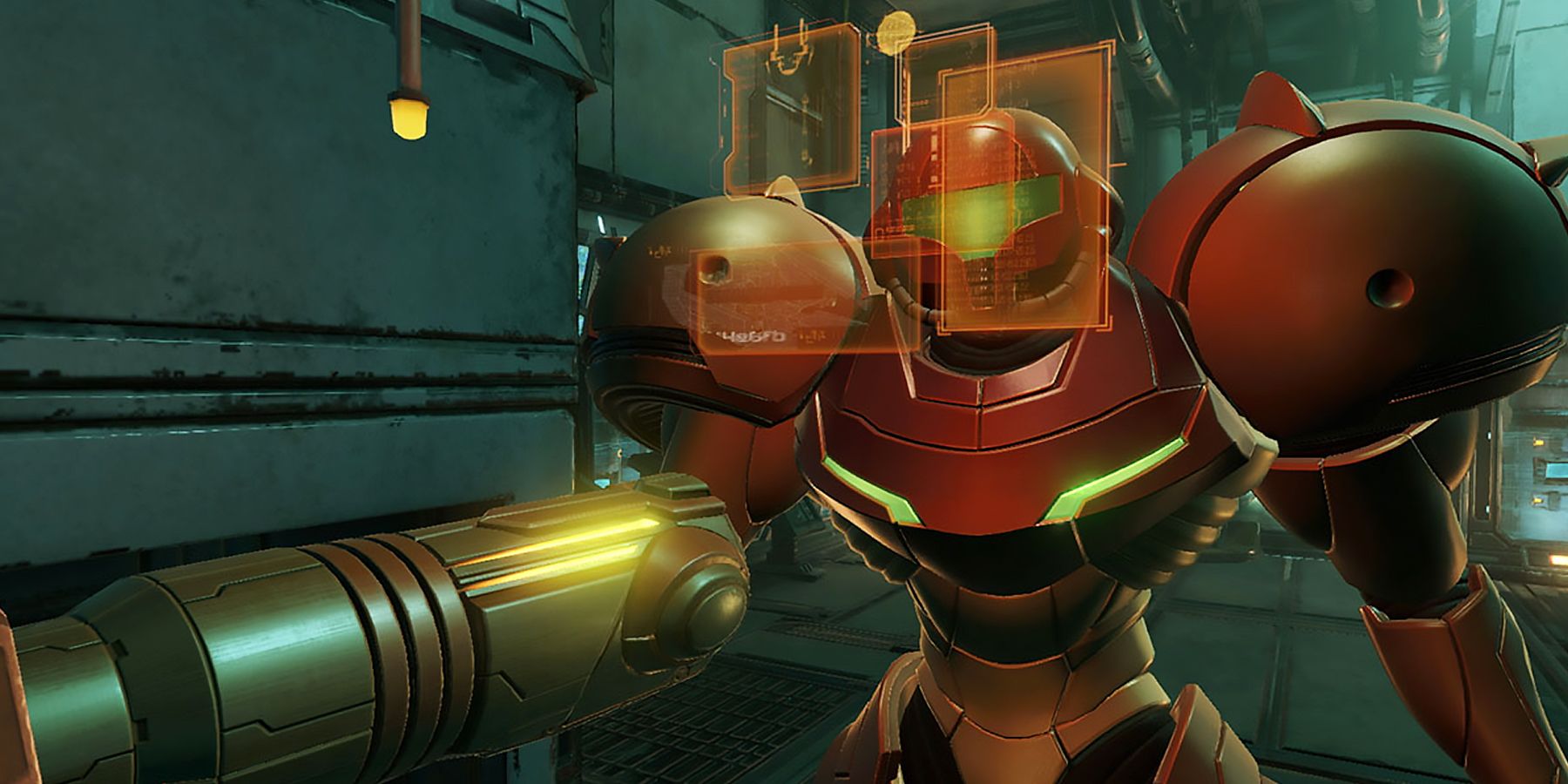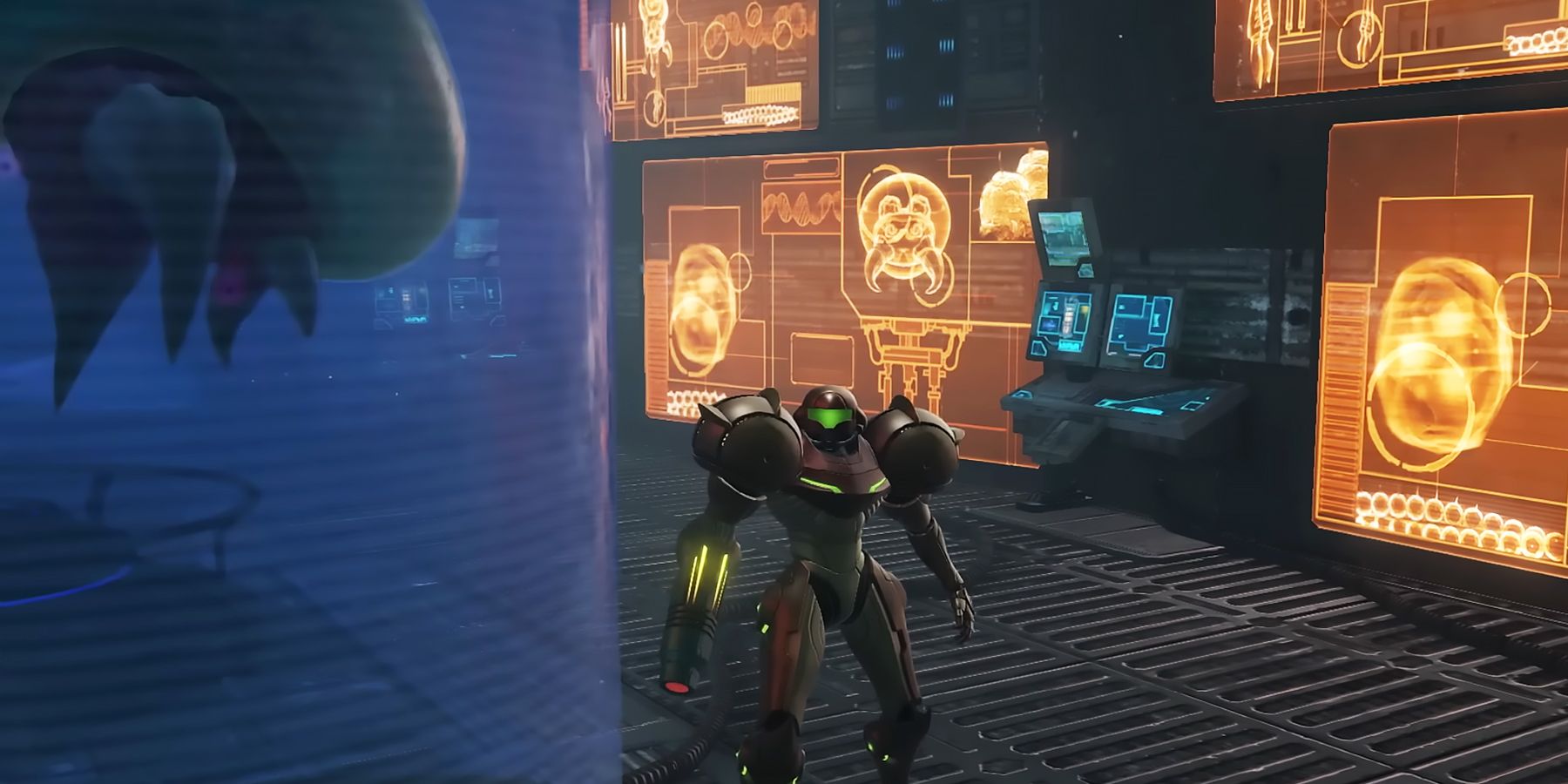The shadow drop of Metroid Prime Remastered was a surprising development for the timeless first-person adventure. Led by Retro Studios, the remaster upgrades the first game with higher-quality graphics, a polished user interface, and new controls on Nintendo Switch. As a product, it acts as an authentic reintroduction into the saga with gameplay that's impressive to this day. Minimal changes to the action in Metroid Prime Remastered are expected and remain a testament to Retro's original design; a sleeker presentation is about all it requires to dazzle players years later.
Although some fans would've preferred an entire Metroid Prime trilogy collection, the remaster's improved control schemes take advantage of the Joy-Con's sticks and gyro capabilities so that aiming feels more natural. Exploration might be more immersive for players that find their favorite option, and there is a total of four settings that integrate modern or classic bindings into the game. A mix of old and new makes this Nintendo release special, so it is only reasonable that it attempts to meet the needs of every player who wants to experience Metroid Prime in its ultimate form.
Control Settings in Metroid Prime Remastered
The default "Dual Stick" option acts as an updated control scheme that conforms to the first-person shooters of today. On the original GameCube, precise actions required players to hold down the trigger before targeting Samus Aran's Arm Cannon. Now, with additional sensitivity adjustments, players can freely move the camera while moving around, using the lock-on feature to strafe around targets. It is a slight change that is empowering without upsetting the balance of the game, and it is also easier to appreciate all the details across Metroid Prime's interconnected maps.
For those that enjoyed the Metroid Prime: Trilogy on the Nintendo Wii, there is a "Pointer" mode that utilizes motion controls to put the power of the iconic bounty hunter in players' hands. Once they get comfortable using these settings, one can have a truly immersive experience where every rotation of the Joy-Con gradually sways the perspective. There is also a "Hybrid" option that combines classic controls with gyroscopic motion, and it is a nice middle-ground between manual coordination and retro/old-school FPS controls. Together, these gyro controls can be an effective means of getting more responsiveness during combat.
Lastly, there is the "Classic" control scheme that is nearly identical to the GameCube title. The original setup might be awkward for newcomers despite the game holding up otherwise. This could be the best choice for gaming purists, but it is remarkable that so many styles are represented in the remaster. While none of these options are game changers by themselves, this selection acknowledges most of the possible preferences that fans would want in a modern release. It makes sense that there is now news of multiple studios contributing to Metroid Prime Remastered, as this product seems to be much more elaborate with how faithful it aims to be.
Since the early 2000s, the Metroid Prime saga has transformed gaming in many ways. Emphasizing exploration and combat-based puzzles, along with an exceptional atmosphere, there are still few games that reach the heights of the first Metroid Prime on GameCube. The remaster represents the progression between titles in the series, but it also lets players pick just how they want to immerse themselves in the role of Samus Aran. Controls should be made more customizable in gaming, but Metroid Prime Remastered goes a step further by providing gameplay-altering settings that help curate the experience.
Metroid Prime Remastered is available on the Nintendo Switch for digital download with physical copies coming on February 22, 2023.





